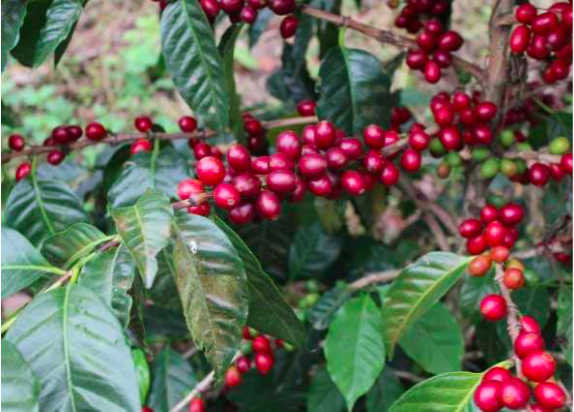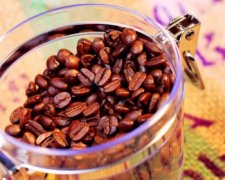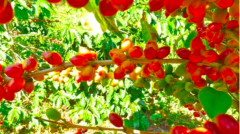Coffee World Map--Panamanian coffee's rise, growing environment and flavor varieties

Professional barista communication, please pay attention to coffee workshop (Weixin Official Accounts cafe_style )
Coffee basics-a quick and easy guide (Kevin Knox, John Wiley & Sons Publications), published in 1997, describes Panamanian coffee as "remarkably similar to coffee grown in the Tres Rios region of Costa Rica: balanced, light, and only suitable for a morning pick-me-up." If the author reprints the book today, these few figures will certainly be rewritten. In these 16 years Panama has gone from being a coffee grower for domestic consumption to an international legend.
Panama is located at the southern tip of Central America, bordering Colombia. If you ask your peers about their impressions of this country, most of them will answer "canal". The isthmus, located in the continental United States, has been of strategic importance since the sixteenth century (Columbus). In the early 19th century, Panama was politically more southerly, and at one point formed the Greater Republic of Colombia with Colombia, Ecuador, and Venezuela. But since 1903 it had broken away from the Union through the help of the United States, and its destiny had been bound to America the moment the canal was built. The Panama Canal, which runs through Central America and connects the Pacific Ocean, Caribbean Sea and Atlantic Ocean, not only opened up shipping trade, but also brought a lot of agricultural knowledge from the United States and Europe. Many retirees in North America chose Panama, where the climate was mild and the living index was relatively low, and indirectly contributed to the later legend of fine coffee and Jade Manor.
North Wind Increases Fructose in Coffee
In contrast to the commercial towns built around canals in the east, the mountains bordering Costa Rica in the west are dominated by farming. Chiriqui Province has a complete infrastructure, so since 1820, coffee has been grown in Bouquete and Volcan areas of the province. Although its production capacity is only one-tenth that of the former (2007), its unique micro-climate is especially suitable for fine coffee growth: the country's rain sometimes comes from the Pacific Ocean and sometimes from the Atlantic Ocean. At the end of the rainy season, a northerly wind, locally known as Bajareque, blows across the mountains like cold air, slowing the ripening of coffee fruits and boosting sugar. Farmers usually hire indigenous Nobes to harvest. With the help of the United States, the world's largest coffee consumer, Panama's processing technology is the best in Latin America.
"Geisha"
Gesha is almost synonymous with modern Panamanian coffee. Before Esmeralda Special became famous in 2003, other common bean varieties in the country were Typica, Caturra, San Ramon (Brazilian Typica variant) and Mundo Novo. The Panama Specialty Coffee Association (SCAP) was founded in 1997, and the Best of Panama (BOP) competition was held in the same year two years before the first COE! This year's BOP is divided into three groups: "Traditional Coffee: washed or honey-treated","Solarization-Geisha and Non-Geisha" and "washed Geisha". Geisha coffee stands out from the crowd, occupying the top of the competition for many years since 2003. In addition, the division of treatment methods is gradually becoming obvious, so it can be seen that similar grouping methods will be adopted in future competitions in other countries.
Text: Patrick Tam (Knockbox Owner, American Boutique Coffee Association, European Boutique Coffee Association Certified Barista, American CQI Certified Cup Tester, Cup of Excellence First Hong Kong Judge)
Important Notice :
前街咖啡 FrontStreet Coffee has moved to new addredd:
FrontStreet Coffee Address: 315,Donghua East Road,GuangZhou
Tel:020 38364473
- Prev

World Map of Coffee-study on the Management and varieties of Coffee in Colombia
Professional baristas Please follow the Coffee Workshop (official Wechat account cafe_style) it is often said that high-quality South American coffee looks like Central America, meaning that Central American coffee is superior to South America, which mainly produces commercial coffee in terms of bean seed, soil, and treatment. But I think Colombia is an exception: on the cup test table, the highest-scoring boutique coffee is generally floral and fruity. The best taxi.
- Next

Coffee World Map-Guatemala Flavor Characteristics, Growing Environment and Awards
Professional barista exchanges, please pay attention to coffee workshop (Weixin Official Accounts cafe_style ) Guadi is the nickname of coffee friends for Guatemala (also translated Guatemala). This Mayan city sits atop 37 volcanoes, two of which erupted in 2010. With frequent tornadoes and natural disasters everywhere, it is a veritable dangerous place. But fertile volcanoes
Related
- Does Rose Summer choose Blue, Green or Red? Detailed explanation of Rose Summer Coffee plots and Classification in Panamanian Jade Manor
- What is the difference between the origin, producing area, processing plant, cooperative and manor of coffee beans?
- How fine does the espresso powder fit? how to grind the espresso?
- Sca coffee roasting degree color card coffee roasting degree 8 roasting color values what do you mean?
- The practice of lattes: how to make lattes at home
- Introduction to Indonesian Fine Coffee beans-- Java Coffee producing area of Indonesian Arabica Coffee
- How much will the flavor of light and medium roasted rose summer be expressed? What baking level is rose summer suitable for?
- Introduction to the characteristics of washing, sun-drying or wet-planing coffee commonly used in Mantenin, Indonesia
- Price characteristics of Arabica Coffee Bean Starbucks introduction to Manning Coffee Bean Taste producing area Variety Manor
- What is the authentic Yega flavor? What are the flavor characteristics of the really excellent Yejasuffi coffee beans?

